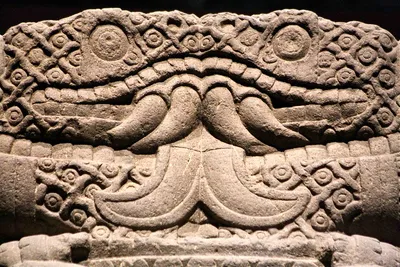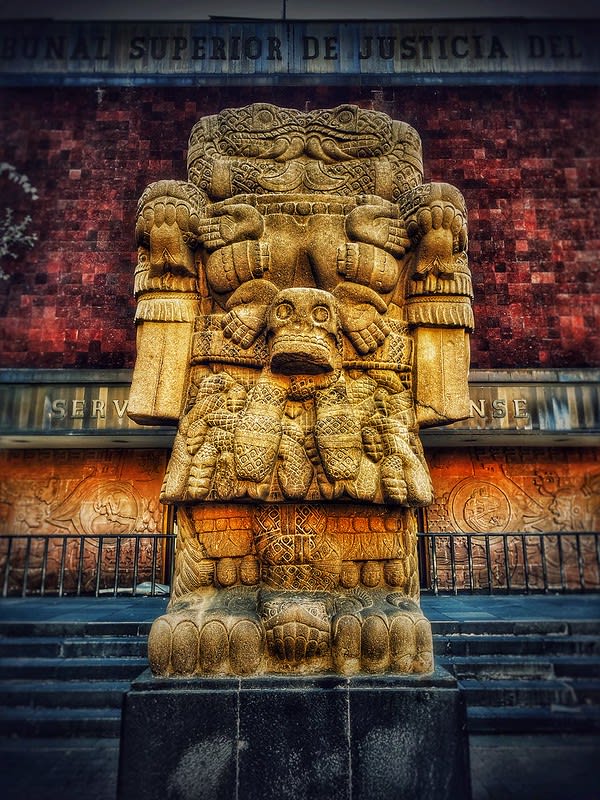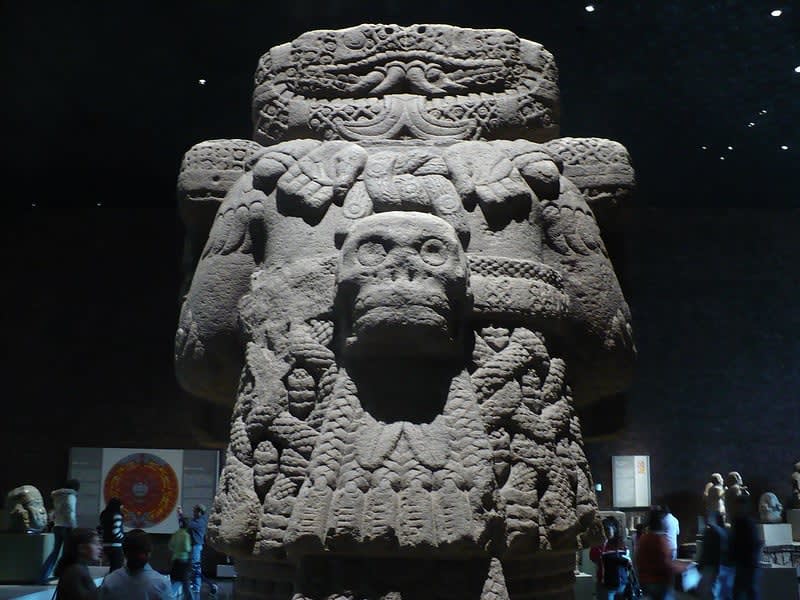
Coatlicue: Revealing the Mystery of the Aztec Maternal Divinity
Who is Coatlicue in Aztec mythology?
Coatlicue, the deity that the Mexica and Aztecs worshipped, was considered the “Mother Goddess of all Gods,” a powerful and mysterious figure.
A goddess with an imposing presence, skulls, serpents, claws, and jaws representing the duality of life and death, the connection between earth and sky.
Her name, Coatlicue, means “She of the skirt of serpents” in Nahuatl. A goddess surrounded by enigmas, believed to have been carved in 1500 AD.
Because of her “disturbing” appearance, the Spanish conquistadors had her buried in the heart of the Plaza Mayor of Mexico where she remained hidden for centuries.
What is the story of Coatlicue?

The story of Coatlicue begins with her marriage to Mixcoatl, the god of hunting and the night sky.
Together, they had several children, including the goddess Coyolxauhqui, who ruled over her siblings.
One day, Coatlicue, already a widow, was sweeping on the hill of Coatepec, when suddenly, a beautiful plumage fell at her feet.
She kept it in her bosom, but when she looks for it later, she discovers that she is pregnant.
The baby would later be the future god Huitzilopochtli, the god of war and the sun.
When Coyolxauhqui learns of the situation, she feels dishonored and convinces her brothers to kill her mother.
But, surprise! It is too late because, at that very moment, Huitzilopochtli is born a brave and armed warrior.
Huitzilopochtli defended his mother and fights against his brothers. The first sons of Coatlicue are sacrificed and become stars.
Coyolxauhqui’s head is cut off and becomes the moon, while the rest of her body rolls down the hill.
Templo Mayor

Coatlicue has a deep connection with the Templo Mayor, which was built inspired by that hill in Coatepec.
In that temple, the bodies of human sacrifices were thrown down, replicating the story of Coatlicue.
Now imagine a monumental figure found in the Plaza Mayor of Mexico City in 1790.
This sculpture impressively depicts the story of Coatlicue. The breasts of the goddess symbolize her role as a mother who suckled the gods.
But here comes the interesting part: the lack of a head, replaced by two snakes.
The claws instead of hands and feet represent human sacrifices. Even the necklace of the goddess is made of hearts and hands, with a skull in the center.
For this reason, she is sometimes called “the filth eater.”
And that’s not all! The image of Coatlicue has inspired many artists throughout time.
Diego Rivera, José Clemente Orozco, Saturnino Hernán, and Miguel Covarrubias, just to name a few, created works of art based on this powerful deity.
Where to admire Coatlicue?

So, if you ever visit the Museum of Mexico City or the Museum of Anthropology, don’t miss the opportunity to admire the imposing sculpture of Coatlicue.
It measures 3.5 meters high and 1.5 meters wide and will immerse you in the history and culture of our ancestors.
Imagine walking through the museum, surrounded by ancestral treasures, while marveling at the representation of Coatlicue and her powerful symbolism.
You can see how painters Diego Rivera, José Clemente Orozco, and others have depicted the image of this deity in murals and works of art that have endured through time.
So don’t miss it, visit the Museum of Mexico City or the Museum of Anthropology and History and delve into the legacy of Coatlicue.
What is the meaning of Coatlicue’s skirt of snakes?
The serpent skirt worn by Coatlicue has great symbolic significance. This skirt is a symbol of fertility and abundance and also represents the cycles of life and death.
The serpents that make up the skirt are a sign of the power of nature and the vital importance of the earth for life.
In addition, snakes are also believed to be a link between the human world and the world of the gods.
Why did the Aztecs worship Coatlicue?
Coatlicue is a multifaceted deity associated with many important aspects of life in Aztec mythology.
Her association with fertility is because she is the mother goddess, and it is thanks to her that plants and animals grow and multiply.
In addition, her relationship with war is because she is the protector of the city of Tenochtitlán and it is believed that she protected the Aztec fighters during battles.
In terms of government, she is associated with Aztec politics, as she was believed to be the mother of rulers.
Finally, in agriculture, Coatlicue is believed to have been one of the main goddesses who taught the Aztecs how to cultivate the crops they needed.